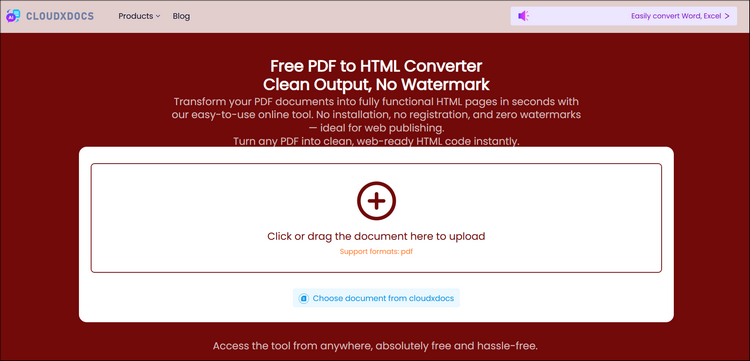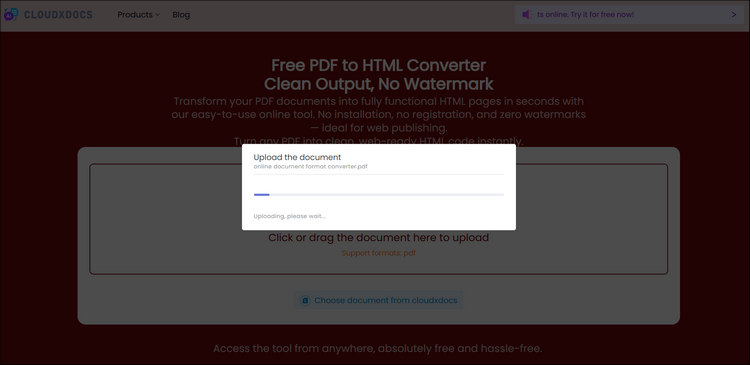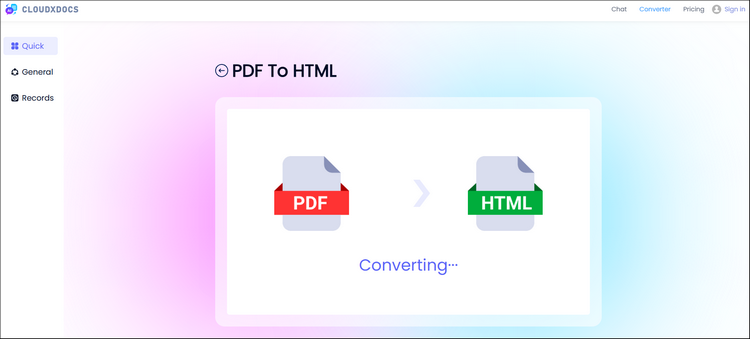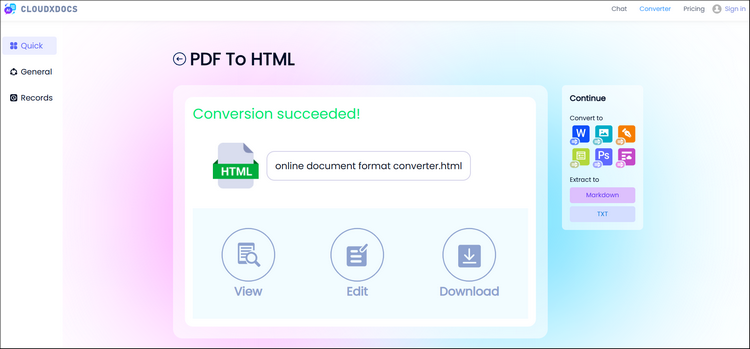How to Convert PDF to HTML Format – Online, Offline & Code
Convert PDF to HTML File: Step-by-Step Guide with 3 Proven Methods
Page Content:
- Method 1. Convert PDF to HTML File Using Adobe Acrobat
- Method 2. Convert PDF to HTML Format Free Online
- Method 3. (Advanced) Convert PDF to HTML File with Code
Intro:
If you want to display your PDF content directly on a website or make it more interactive, converting it into HTML format is the way to go. HTML files are web-friendly, lightweight, and easy to edit, making them perfect for online publishing. Whether you’re updating your portfolio, creating a blog post, or sharing documents with a global audience, HTML ensures your content is accessible to everyone without requiring a PDF reader.
In this post, you’ll learn three effective methods to convert PDF to HTML format—using Adobe Acrobat, a free online tool, and a code library. Finally, you’ll know exactly which method suits your needs best.
Method 1. Convert PDF to HTML File Using Adobe Acrobat
Pros:
- Reliable and accurate conversion with layout preservation
- Allow customization of HTML output
- Works offline without internet dependency
Cons:
- Requires a paid Adobe Acrobat Pro subscription
- Can be complex for beginners
- Large software installation needed
Adobe Acrobat is the most used application of users to open and edit a PDF file, so this is also the top choice when talking about PDF file conversion. Adobe Acrobat does provide multiple conversion formats when converting a PDF file. However, most functions require a paid Adobe Acrobat Pro Subscription. If you already have the subscription, read through to manage conversion now.
Full steps of using Adobe Acrobat to convert your PDF files into HTML format:
Step 1. Right-click your PDF file to “Open with Adobe Acrobat“ first.
Step 2. Find the “Convert“button from the Ribbon of Adobe Acrobat. Choose “HTML Web Page“ as the output format. Then, you can choose to export the PDF file in one HTML file or several web pages.
If you choose single file, Adobe Acrobat will merge all PDF files into one; if you choose several web pages, it will split PDF files based on the file length.
Step 3. After all settings are done, you can click the blue “Convert“ button to finish conversion.
Method 2. Convert PDF to HTML Format Free Online
Pros:
- No software installation required
- Works on any device with internet access
- Quick and easy process
Cons:
- Dependent on internet connection
- File size limits may apply
- May have fewer customization options than desktop software
If you don’t have Adobe Acrobat subscription or want a free and faster method, an online converter is your best choice.
One reliable option is the [CloudxDocs Online PDF to HTML Converter](https://www.cloudxdocs.com/converter/pdf_to_html). This tool allows you to upload your PDF, convert it instantly, and download the HTML file—all without hidden fees or watermarks. It supports high-quality conversions while keeping your data secure.
Here is the full guide of using CloudxDocs online PDF to HTML converter:
Step 1. Open the official site of CloudxDocs online PDF to HTML Converter. Click or drag to upload your PDF files and wait for the automatic file analysis.
Step 2. After analyzing the uploaded PDF file, CloudxDocs Online PDF to HTML Converter will begin the conversion immediately. Wait a few seconds for the process to finish.
Step 3. After conversion, you can click the “Download“ button to save the converted HTML file to your local file location.
Method 3. (Advanced) Convert PDF to HTML File with Code
Pros:
- Fully automated conversion through code, suitable for batch processing
- Works offline and keeps data secure on your own system
- Highly customizable to fit specific project needs
- Supports multiple programming languages (C#, Java, Python, etc.)
Cons:
- Require programming knowledge and setup
- Take more time to implement compared to ready-made tools
If you’re a developer or need to automate PDF-to-HTML conversion on a larger scale, using a programming library like Spire.PDF is a powerful solution. This method allows you to process multiple files in bulk, customize the output, and integrate conversion directly into your applications.
Spire.PDF supports various programming environments, including C#, Java, and Python, and offers advanced PDF manipulation features beyond simply PDF to HTML conversion—such as merging and splitting, adding watermarks, creating tables with code, etc.
The steps of using Spire.PDF for .NET to convert a PDF file into HTML format are listed below:
Step 1. Download Spire.PDF for .NET API from its official download page or you can install it from Nuget via the code below:
1 | PM> Install-Package Spire.PDF |
Step 2. Copy the sample code below to your code editor. Don’t forget to customize according to your specific file location.
1 | using Spire.Pdf; |
If you need tutorials of using Spire.PDF to convert PDF files into HTML in more environments, click to follow the guides below:
Final Words
Converting PDF to HTML format can make your documents more interactive, searchable, and web friendly. In this guide, we covered three practical methods, using Adobe Acrobat for a professional offline solution, CloudxDocs for a quick, free, and hassle-free online option, and Spire.PDF for a more advanced option.
If you need fast results without installing any software, CloudxDocs Online PDF to HTML Converter is the perfect tool. It offers high-quality conversion, strong data security, and no hidden costs—ideal for both personal and professional use.
Start converting your PDFs to HTML with CloudxDocs today and make your content web-ready in seconds!













